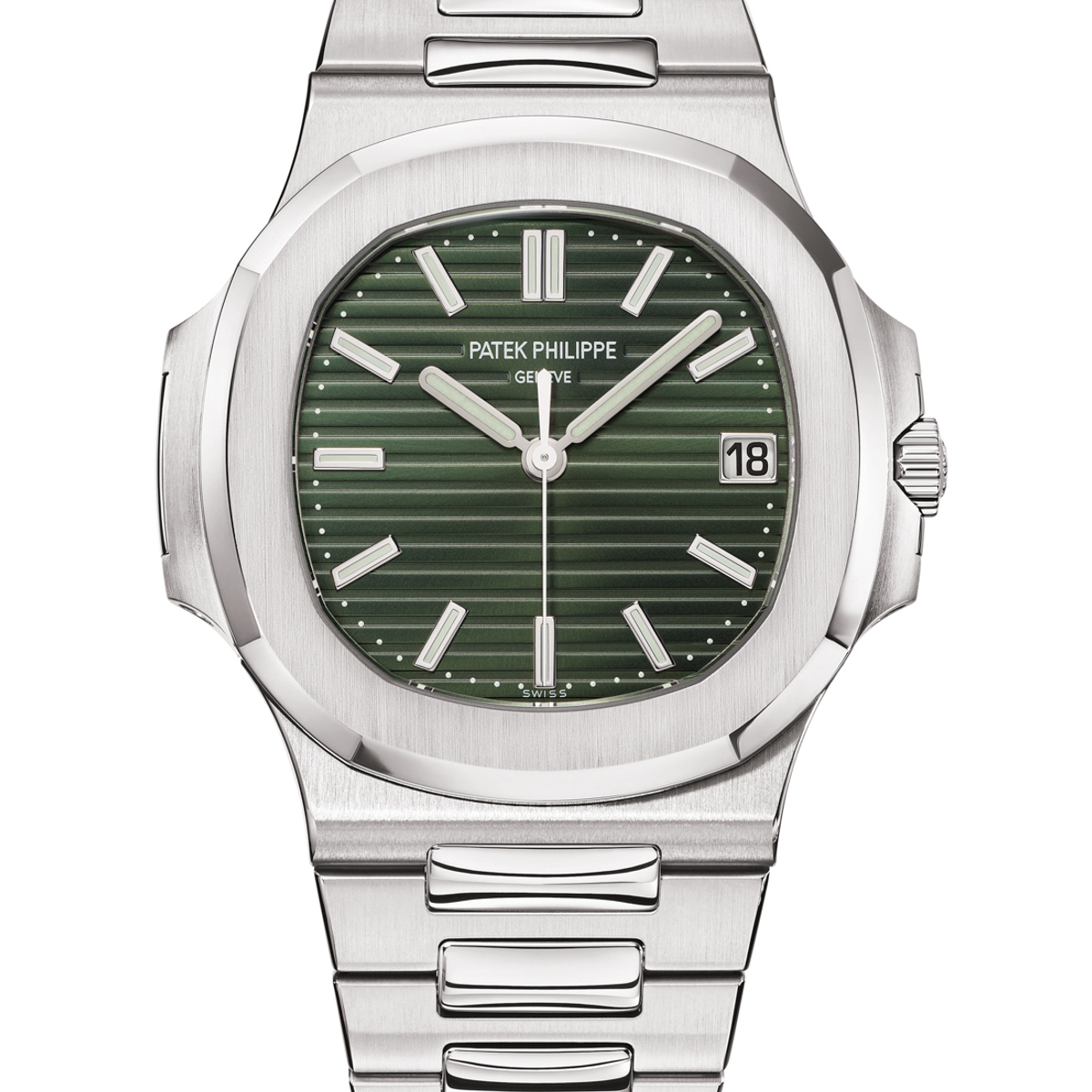Launch Year
1976
Functions
hours, minutes, date
Movement
mechanical self-winding
Distinctive features
steel case, 42mm diameter, water-resistant to 120m, porthole-inspired design by Gérald Genta
When it launched in 1976, the Nautilus took the watch world by surprise. Less because this was a luxury steel watch and more because it was signed Patek Philippe. While the concept dated back to the beginning of the decade, nobody had expected this Geneva-based company to take it on board so quickly. The most immediately noticeable feature of this Gérald Genta design was a case that was particularly large for the period (42mm at its widest point), inspired by the portholes of historical transatlantic liners. It was extended to the left and right by strange protuberances called "ears". In reality, they masked screw hinges that secured the bezel to a single-piece caseback and case middle. This original construction – most watches were and still are composed of three parts – served a carefully studied and patented purpose: to compress the gaskets between the two case components for water resistance to 120 metres; a true feat that earned the watch its name: Nautilus, in reference to Captain Nemo's submarine in Jules Verne's Twenty Thousand Leagues Under the Sea.
Despite its large diameter, it was remarkably slender at just 7.6mm thick. However, this was not the only refined touch by Patek Philippe, from whom one would expect no less. The brand fitted the Nautilus with an extremely sophisticated bezel that was not really round and yet not square or cushion-shaped, nor even octagonal despite its eight sides which, alternating between two different lengths, featured subtly drawn outlines shaped like arcs of a circle. For the dial, the horizontally grooved pattern was accompanied by a colour that went from blue to black depending on wrist movements. As for the integrated metal bracelet, it was exceptionally comfortable. This elegance, which magnified the sporty design of the model and imbued it with the personality of the brand, enabled Patek Philippe not only to win over a new clientele but also to gain a following for this line among existing aficionados. The Nautilus enjoyed growing success, especially from the 1980s onwards, welcoming variations in size, materials and dial as well as the advent of a few additional functions, before being revisited on the occasion of its 30th anniversary.
In 2006 Patek Philippe ceased production of all previous models to make way for a new three-part, classically built collection featuring a distinct bezel, case middle and back, with the latter adopting a sapphire crystal to reveal the movement beating inside. Advances in manufacturing techniques made it possible to preserve the initial 120-metre water-resistance. The hinge-ears were still present, their slightly curved sides more smoothly following the profile of the bezel and making the watch slightly wider: 43mm instead of 42mm for the direct descendant of the famed Jumbo, and 44mm for the most sophisticated versions. The women's collection was similarly revisited three years later.
In addition to three-handed versions, naturally including a steel version with a blue-black dial, the 2006 line-up of new releases notably featured Reference 5712 (pointer-type calendar, moon phases and power reserve) and, as a highlight, the first ever Nautilus chronograph, featuring remarkable integrated pushers. It was self-evident that the sportiest of all Patek Philippe watches should have such a function, but to do so properly, the brand had opted to wait until it had a movement entirely designed and developed in its own workshops. This eagerly awaited calibre had been unveiled the previous year and thus paved the way for the new development.
Since then, the Nautilus collection has been enriched with an Annual Calendar Moon Phases model (2010) and the amazing Travel Time Chronograph (2014), the result of a new stylistic evolution. Replacing the left hinge, local time-setting pushers were almost imperceptibly integrated for the operation of the dual-time display. This Nautilus, followed in 2018 by a Perpetual Calendar (Ref. 5740/1G-001), the first major complication in the collection, enabled a new step forward without compromising the range's emblematic design.
Bad news came for the Nautilus Reference 5711’s many fans when in 2021 Patek Philippe announced it would be ending production of the legendary 2006 model, releasing one final version with a green dial. A year later, the brand introduced a new take on the 1976 original. Very slightly wider at 41mm versus 40mm, the Nautilus Reference 5811/1G-001 in white gold sports a sunburst dial with a blue-black gradient among other aesthetic and technical refinements. The two-part case construction harks back to the original Nautilus, and still provides water-resistance to 120 metres. Visible through the sapphire caseback, the self-winding Calibre 26-330 S C includes a stop-seconds mechanism so that the time can be set to the second.
Key Characteristics
• Design by Gérald Genta
• Steel case, octagonal bezel, self-winding movement
